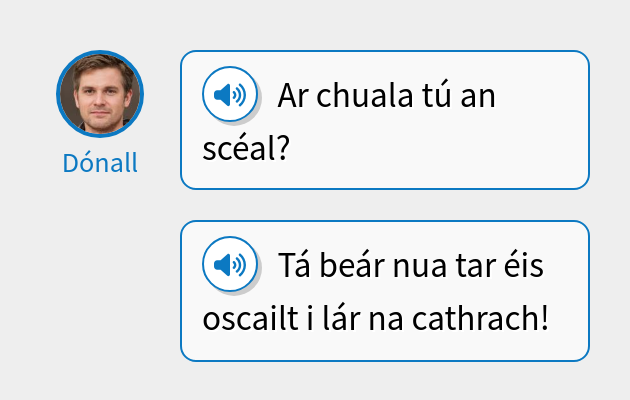When to say ‘bíonn’ instead of ‘tá’: the habitual present tense in Irish
In one of this week’s Irish chats, Gráinne is complaining about the morning’s traffic and Dónall replies that the traffic is like that almost every day:
An interesting question is, why does he say bíonn istead of tá? This is a good opportunity to remind ourselves that the verb to be in Irish has two types of present tense, tá and bíonn.
The tá is for talking about things which are true on this one occasion, while the bíonn is for talking about things which tend to be true repeatedly on several occasions. Grammar books usually refer to the bíonn form as the verb’s habitual present tense, while the tá form is simply the “normal” present tense.
Compare these pairs of examples:
Tá sé mar sin inniu. It is like that today.
Bíonn sé mar sin gach lá. It is like that every day.
Tá an pub lán anocht. The pub is full tonight.
Bíonn an pub lán go minic. The pub is often full.
Tá siad anseo anois. They are here now.
Bíonn siad anseo go rialta. They are here regularly.
You will notice that the habitual bíonn often comes with adverbs that describe repeating occasions (gach lá every day, go minic often) while tá comes with adverbs that refer to a single occasion (inniu today, anois now).
The rule of thumb is that if you could rephrase the is with tends to be, then it’s a clue you should use bíonn instead of tá: it “tends to be” like that every day, the pub “tends to be” full often, they “tend to be” here regularly.
